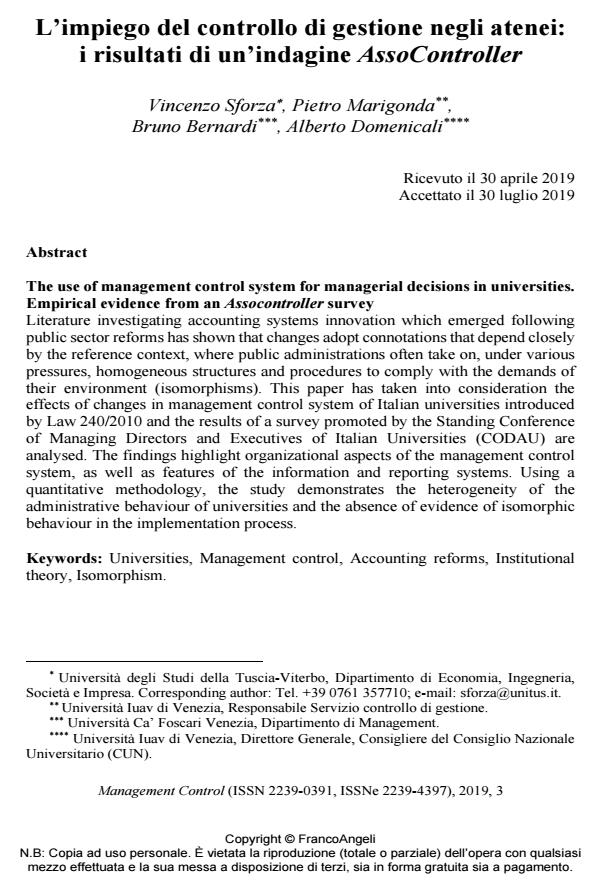The use of management control system for managerial decisions in universities. Empirical evidence from an Assocontroller survey
Journal title MANAGEMENT CONTROL
Author/s Vincenzo Sforza, Pietro Marigonda, Bruno Bernardi, Alberto Domenicali
Publishing Year 2019 Issue 2019/3
Language Italian Pages 24 P. 99-122 File size 373 KB
DOI 10.3280/MACO2019-003006
DOI is like a bar code for intellectual property: to have more infomation
click here
Below, you can see the article first page
If you want to buy this article in PDF format, you can do it, following the instructions to buy download credits

FrancoAngeli is member of Publishers International Linking Association, Inc (PILA), a not-for-profit association which run the CrossRef service enabling links to and from online scholarly content.
Literature investigating accounting systems innovation which emerged following public sector reforms has shown that changes adopt connotations that depend closely by the reference context, where public administrations often take on, under various pressures, homogeneous structures and procedures to comply with the demands of their environment (isomorphisms). This paper has taken into consideration the effects of changes in management control system of Italian universities introduced by Law 240/2010 and the results of a survey promoted by the Standing Conference of Managing Directors and Executives of Italian Universities (CODAU) are analysed. The findings highlight organizational aspects of the management control system, as well as features of the information and reporting systems. Using a quantitative methodology, the study demonstrates the heterogeneity of the administrative behaviour of universities and the absence of evidence of isomorphic behaviour in the implementation process.
Keywords: Universities, Management control, Accounting reforms, Institutional theory, Isomorphism.
- Il risk management approach nelle Università italiane: prime riflessioni su vincoli e opportunità Manuela Lucchese, Giuseppe Sannino, Paolo Tartaglia Polcini, in MANAGEMENT CONTROL 1/2020 pp.111
DOI: 10.3280/MACO2020-001006
Vincenzo Sforza, Pietro Marigonda, Bruno Bernardi, Alberto Domenicali, L’impiego del controllo di gestione negli atenei: i risultati di un’indagine AssoController in "MANAGEMENT CONTROL" 3/2019, pp 99-122, DOI: 10.3280/MACO2019-003006